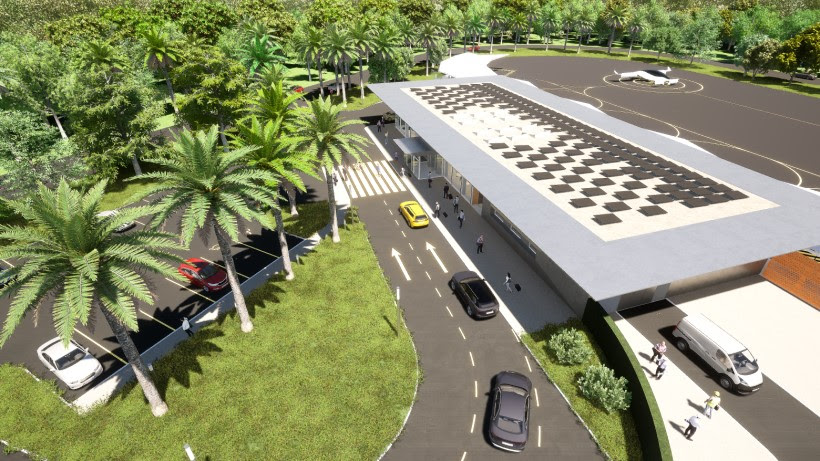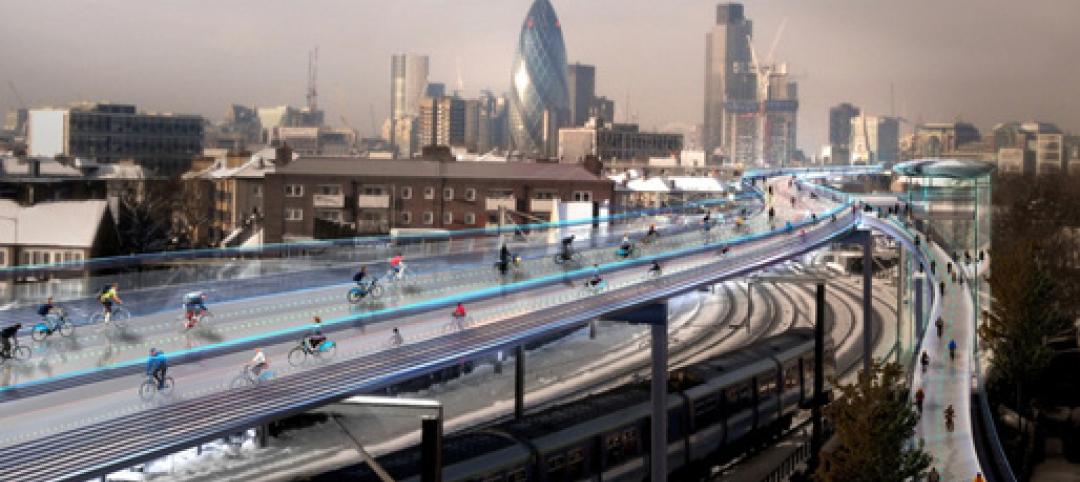AECOM and Ferrovial have partnered to design a network of vertiports that will connect strategic locations in major Florida cities. Vertiports are a key component in enabling innovation in electric vertical take off and landing (eVTOL) aircraft by providing the necessary infrastructure for landing, recharging, and departure.
The vertiporm infrastructure emphasizes sustainability and efficiency by taking advantage of sunlight and natural elements. Noise abatement materials and surfaces are a key feature of the airfield design in order to further reduce the already ultra-low noise emissions from eVTOL jets. The veriport terminal buildings will provide a user-friendly passenger experience by enabling touches processes, quick journeys, and a comfortable environment.
"It is important for us that the design of the vertiport infrastructure reflects the innovative nature of the eVTOL crafts while creating a warm, welcoming environment,” said Elisabeth Bernitt, Senior Vice President and Managing Principal with AECOM’s Buildings + Places business, in a release. “By incorporating flexible and modular elements our partners will be able to scale the vertiports with growth, permitting an efficient space that allows for future innovation while emphasizing the passenger experience.”
The Ferrovial and AECOM-designed vertiporm infrastructure will help enable a high-speed, environmentally friendly, affordable alternative transport system that will connect Florida’s cities in new, sustainable, and more convenient ways.
Related Stories
Smart Buildings | Jan 7, 2014
9 mega redevelopments poised to transform the urban landscape
Slowed by the recession—and often by protracted negotiations—some big redevelopment plans are now moving ahead. Here’s a sampling of nine major mixed-use projects throughout the country.
| Jan 6, 2014
What is value engineering?
If you had to define value engineering in a single word, you might boil it down to "efficiency." That would be one word, but it wouldn’t be accurate.
| Jan 3, 2014
Norman Foster proposes elevated bikeways throughout London
Called SkyCycle, the plan calls for the construction of wide, car-free decks atop the city's existing railway corridors.
| Dec 13, 2013
Safe and sound: 10 solutions for fire and life safety
From a dual fire-CO detector to an aspiration-sensing fire alarm, BD+C editors present a roundup of new fire and life safety products and technologies.
| Dec 10, 2013
16 great solutions for architects, engineers, and contractors
From a crowd-funded smart shovel to a why-didn’t-someone-do-this-sooner scheme for managing traffic in public restrooms, these ideas are noteworthy for creative problem-solving. Here are some of the most intriguing innovations the BD+C community has brought to our attention this year.
| Nov 27, 2013
Wonder walls: 13 choices for the building envelope
BD+C editors present a roundup of the latest technologies and applications in exterior wall systems, from a tapered metal wall installation in Oklahoma to a textured precast concrete solution in North Carolina.
| Nov 26, 2013
Construction costs rise for 22nd straight month in November
Construction costs in North America rose for the 22nd consecutive month in November as labor costs continued to increase, amid growing industry concern over the tight availability of skilled workers.
| Nov 25, 2013
Building Teams need to help owners avoid 'operational stray'
"Operational stray" occurs when a building’s MEP systems don’t work the way they should. Even the most well-designed and constructed building can stray from perfection—and that can cost the owner a ton in unnecessary utility costs. But help is on the way.
| Oct 30, 2013
11 hot BIM/VDC topics for 2013
If you like to geek out on building information modeling and virtual design and construction, you should enjoy this overview of the top BIM/VDC topics.
| Oct 18, 2013
Researchers discover tension-fusing properties of metal
When a group of MIT researchers recently discovered that stress can cause metal alloy to fuse rather than break apart, they assumed it must be a mistake. It wasn't. The surprising finding could lead to self-healing materials that repair early damage before it has a chance to spread.

















